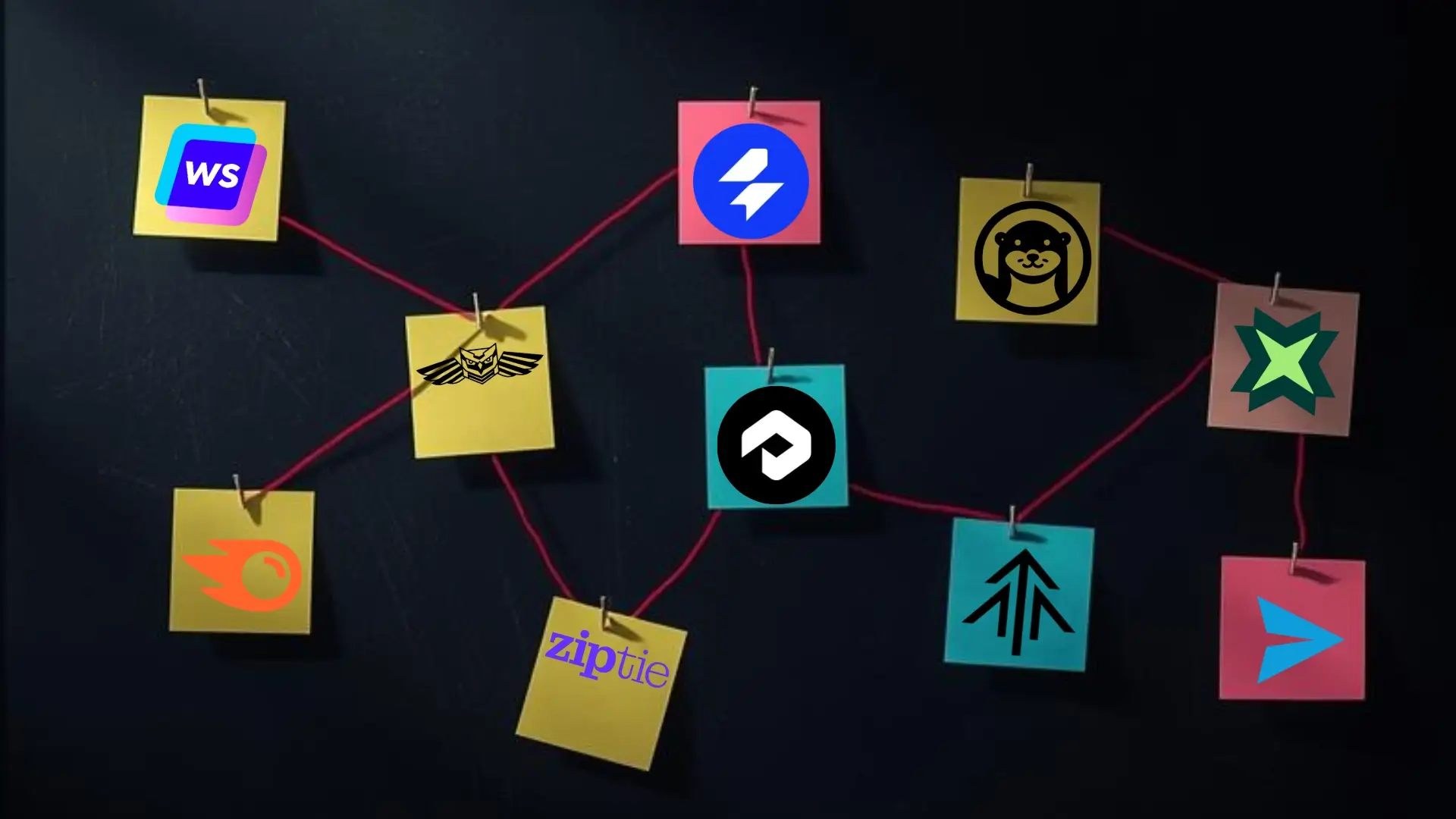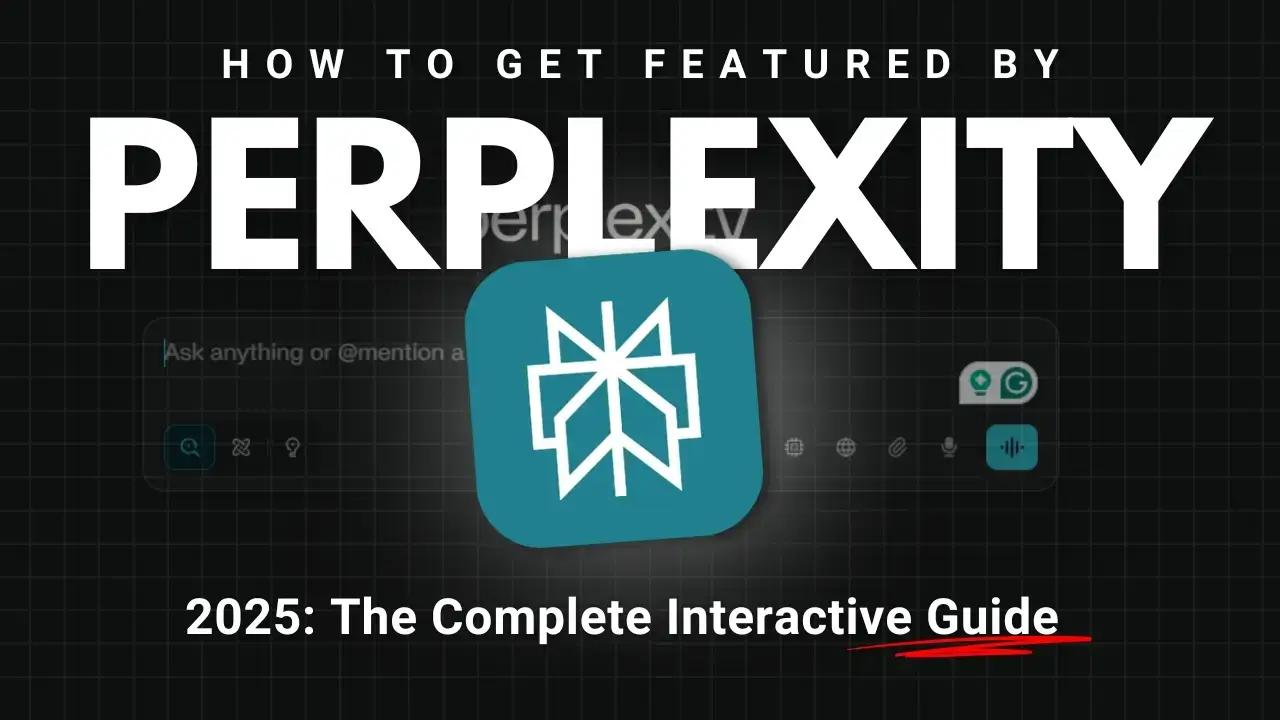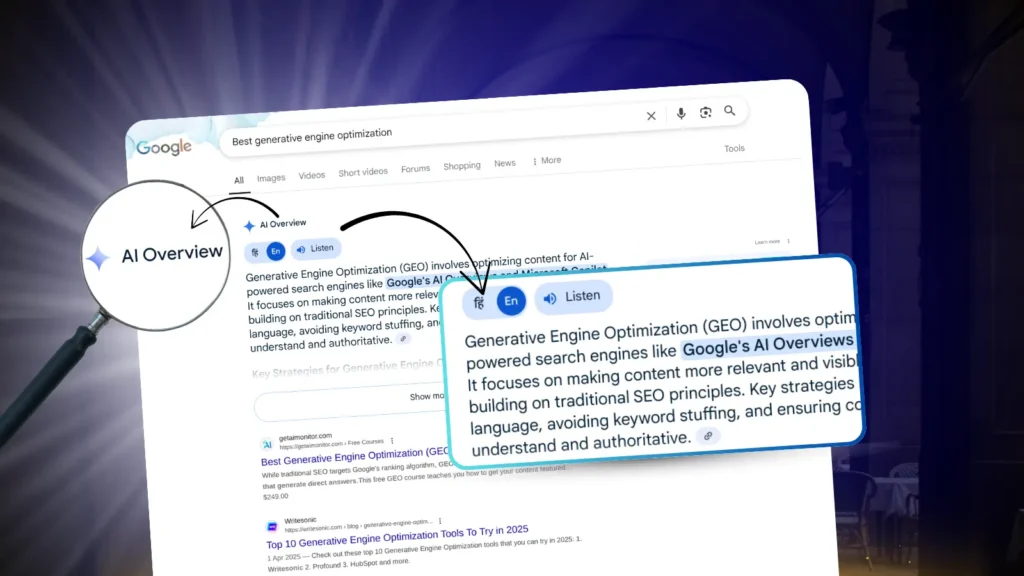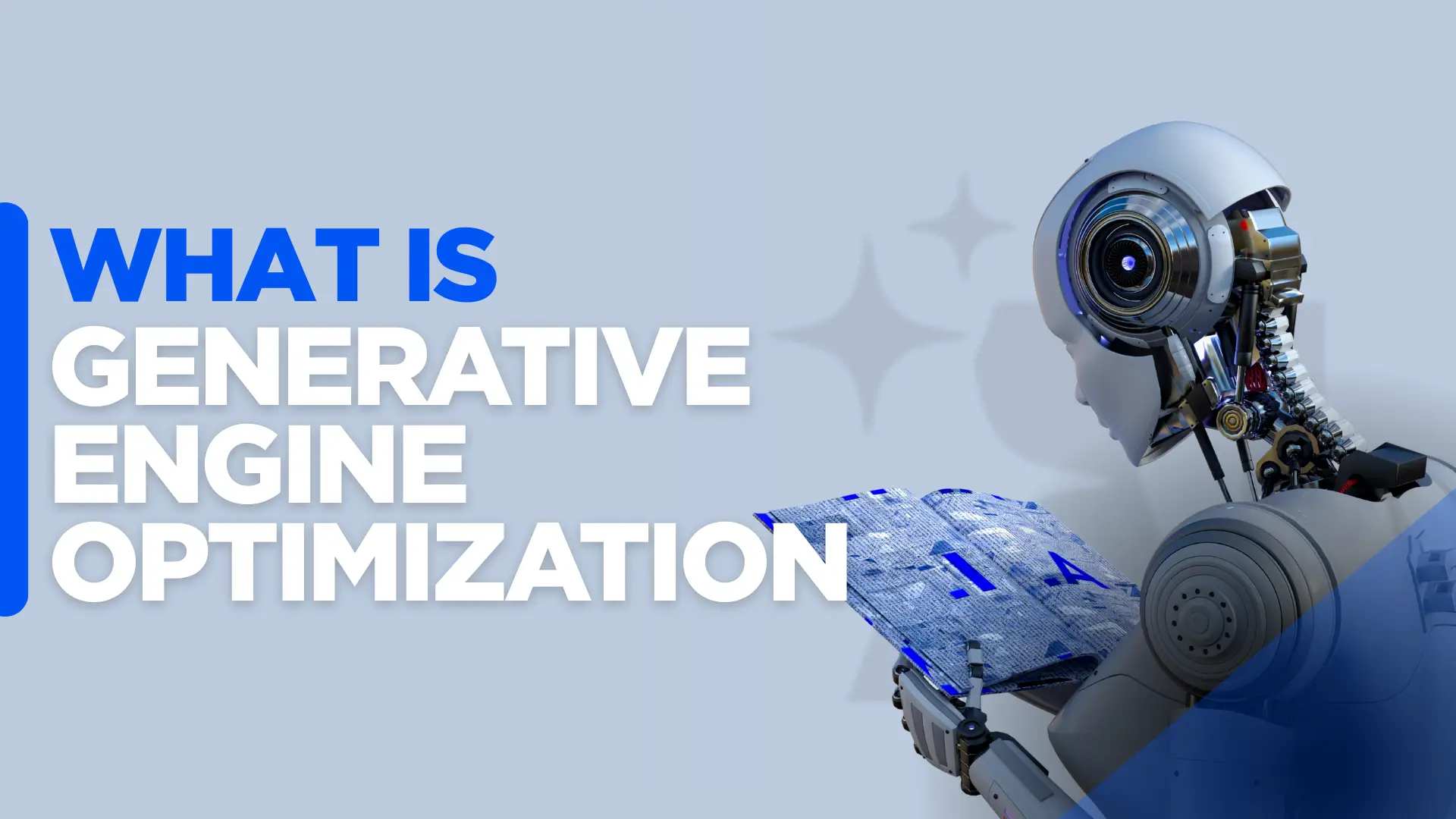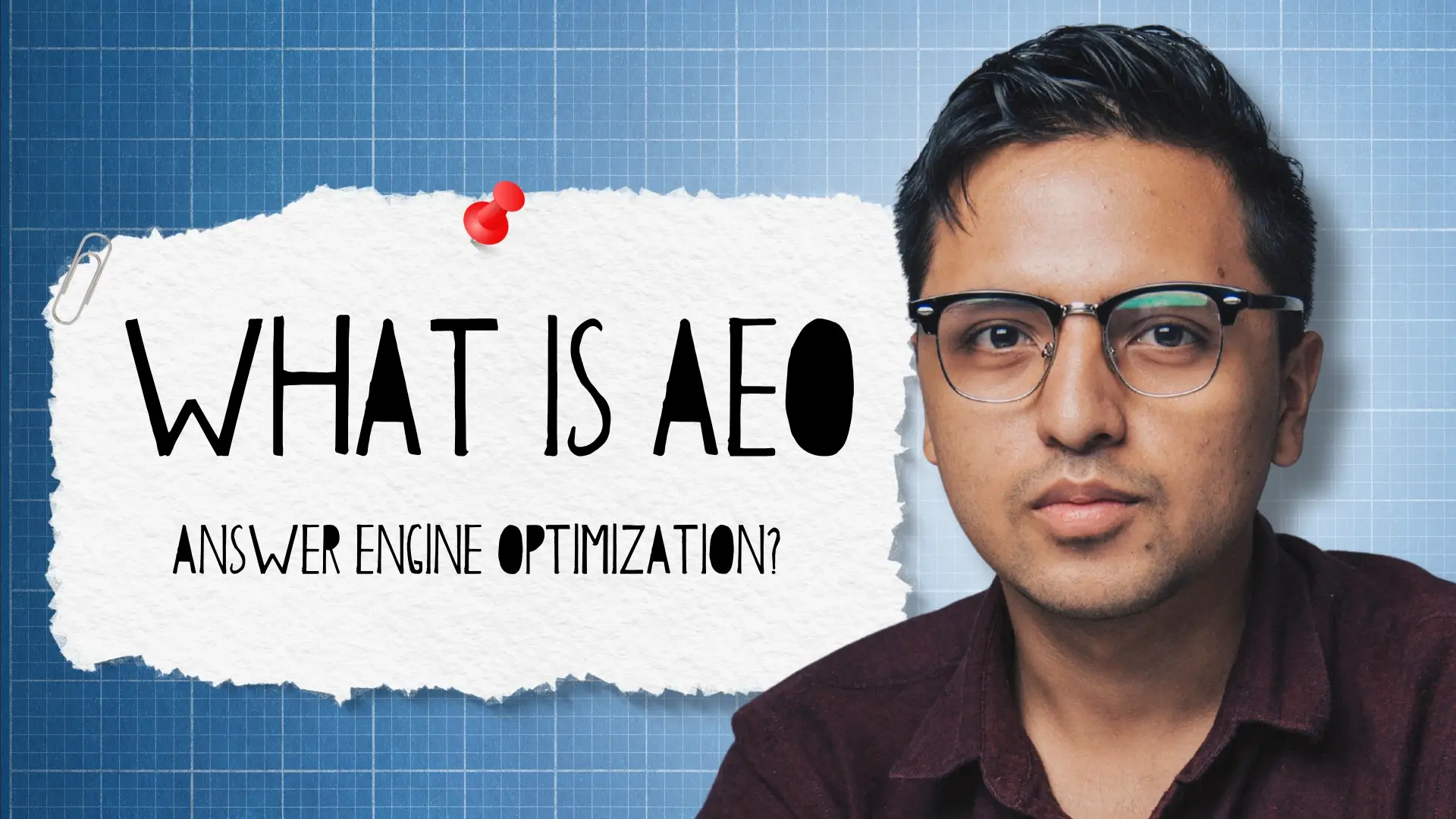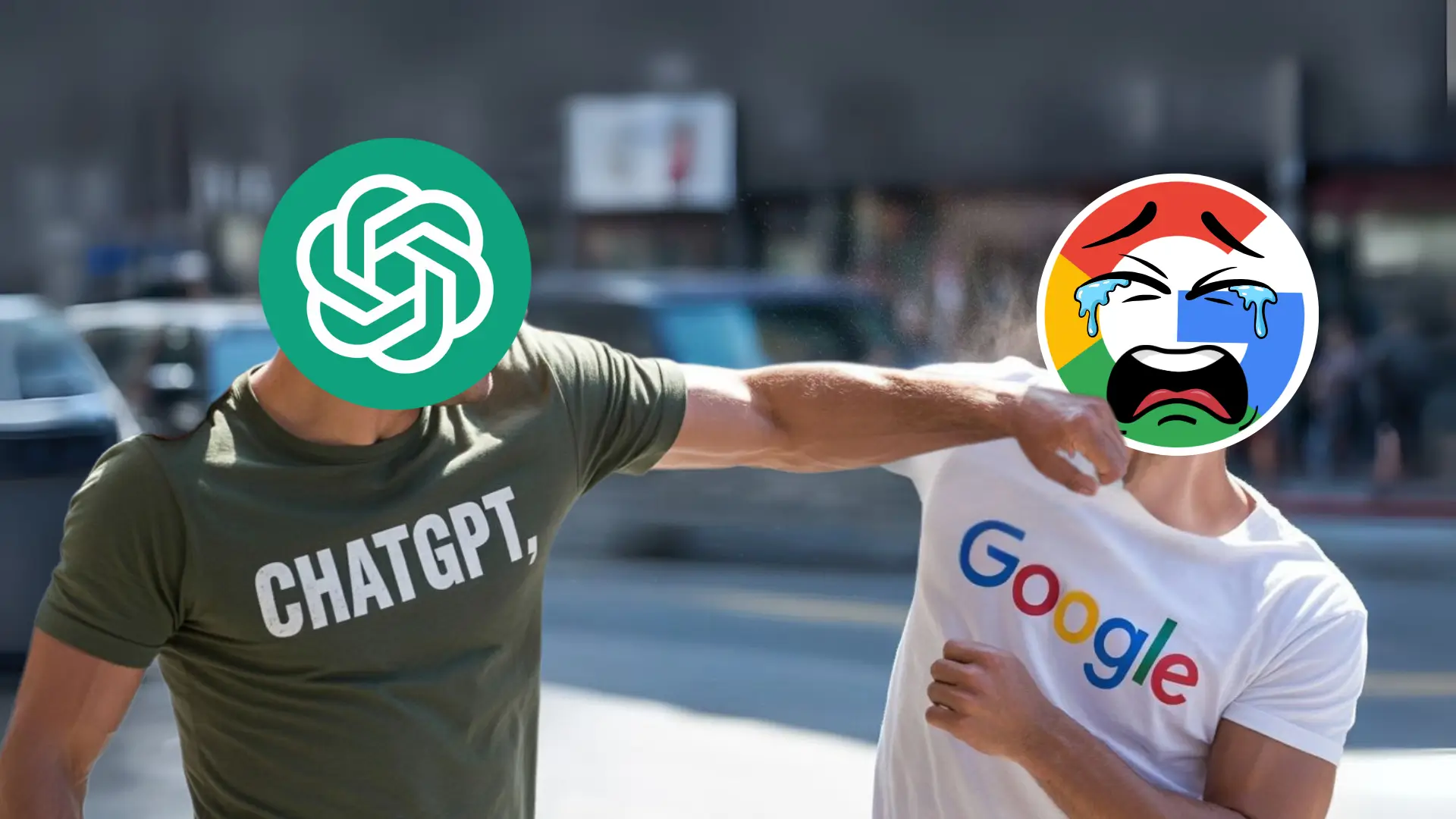That moment when you hit #1 on Google... remember that feeling? It was like a high-five from the internet gods, proof that all your hard work paid off. Some days, that big, bold ranking gave me a huge smile.
But lately, that feeling's been a little hollow. We've all seen it happen: you pour your heart into a piece of content, only to watch it get compressed into a few sentences by an AI. Suddenly, your carefully crafted work is invisible, buried under an AI Overview or a quick answer from Gemini. If you've felt like your efforts are disappearing into a black hole, you're not alone.
The game has changed. A top ranking on Google isn’t the finish line anymore. The new goal is to become the trusted source that AI chooses to cite.
This is a new field with a new name: Generative Engine Optimization (GEO). The old SEO playbook just isn't enough anymore. The tools that got us here were built for a different world, one that’s already in the rearview mirror.
That's why we created this guide. Generative Engine Optimization (GEO) is the new battleground, and most tools are still stuck in 2023. We’ve evaluated the top GEO tools available today, from agile startups to enterprise-level platforms, to help you stay visible in this new, AI-first future of search.
Ready to play the new game?
What is Generative Engine Optimization (GEO)?
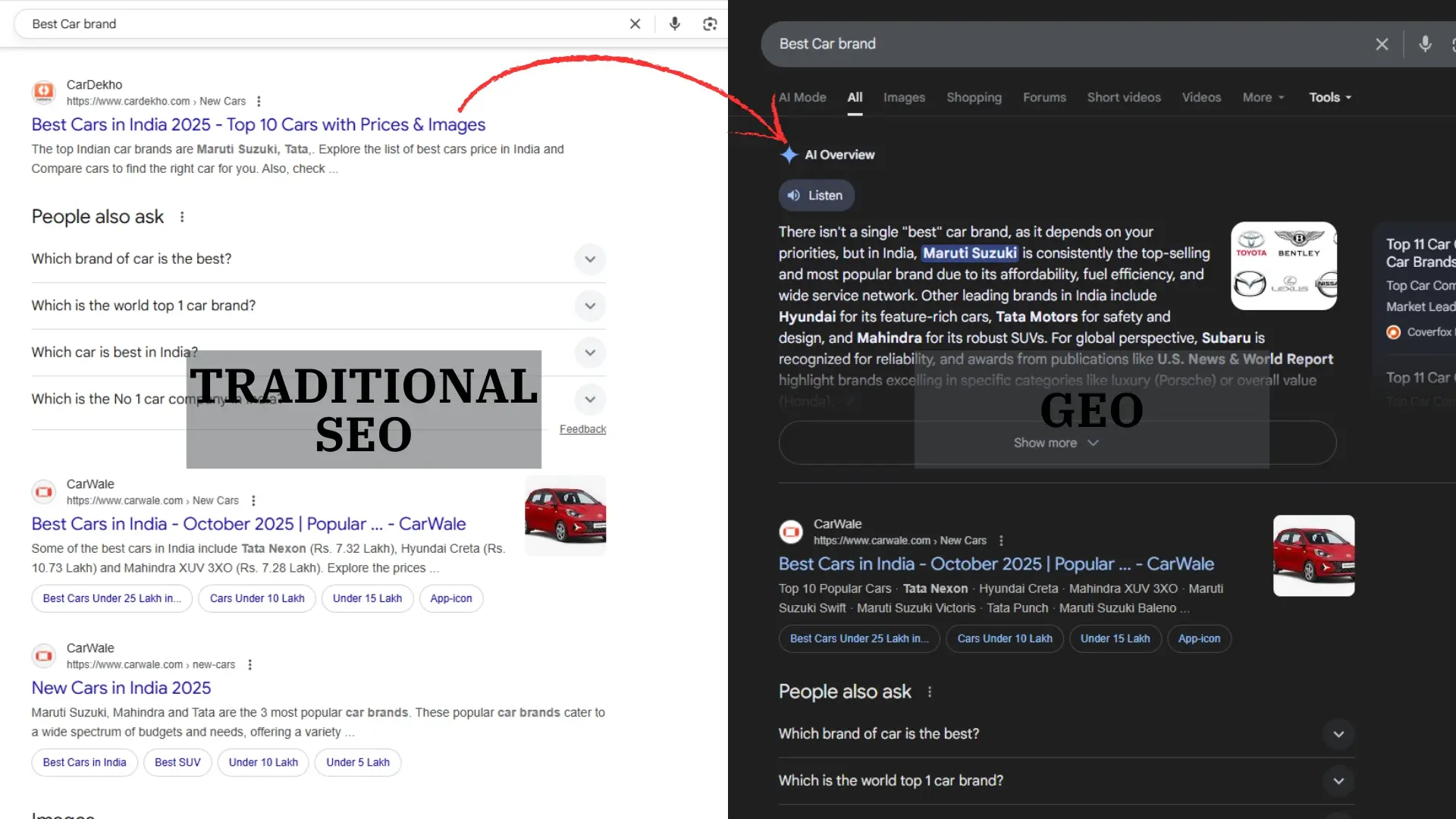
Generative Engine Optimization (GEO) is the strategic practice of creating, structuring, and technically optimizing digital content to be easily understood, selected, and cited by generative AI systems. It is an evolution of traditional SEO that goes beyond earning a high rank on a search results page. The core objective of GEO is to build a brand's authority and content clarity so that it becomes the trusted, go-to source an AI chooses to reference when providing a direct, synthesized answer to a user's query.
Put simply: SEO gets you seen. GEO gets you quoted.
SEO can be gamed. GEO can’t. It is not a bunch of techniques but a systematic process of building trust.
Avinash Tripthi
AI MonitorBy mastering GEO, brands don’t just compete for search rankings; they shape the AI-driven conversations that influence user decisions.
How GEO (Generative Engine Optimization) Differs from SEO (Search Engine Optimization)
| Aspect | SEO (Search Engine Optimization) | GEO (Generative Engine Optimization) |
|---|---|---|
Primary Goal | Rank on a list of links to drive traffic. | Be cited and referenced in AI-generated answers. |
Target Platforms | Search engines (Google, Bing, Yahoo). | Generative engines (ChatGPT, Gemini, Claude, Perplexity, Google AI Overviews). |
Key Signals | Backlinks, keywords, and technical SEO. | Content authority, structured data, entity clarity, conversational language. |
Measurement | Clicks, impressions, rankings, traffic. | Citation rate, sentiment in AI answers, and AI-driven referrals. |
Why GEO (Generative Engine Optimization) Matters Now
A study of study of Google's AI Overviews showed that they reduce organic clicks to top-ranking websites by as much as 34.5%
A study found that 40% of the sources cited in AI Overviews showed do not appear in the top 10 search results on a traditional SERP
70% of consumers now say AI tools are becoming their go-to for product or service recommendations, replacing traditional search methods
Why These Stats Matter
Numbers speak louder than words, and they validate our claim that Generative Engine Optimization (GEO) is no longer a future-gazing exercise; it's a present necessity. For instance, the 34.5% drop in organic clicks isn't just a number; it's a wake-up call that the user journey has fundamentally changed. Your brand's visibility is now at risk, regardless of your traditional search ranking. This reality is compounded by the fact that 40% of sources cited in AI Overviews aren't even in the top 10 results, proving that a new, more level playing field has emerged. This is a direct opportunity for brands to win by mastering GEO. Ultimately, with 70% of consumers now turning to AI for recommendations, adapting isn't an option; it's a requirement to remain relevant and part of the consumer's decision-making process.
How We Evaluated These Generative Engine Optimization (GEO) Tools
To create this list, we went beyond simple feature lists. We focused on the metrics that matter in the new AI-driven landscape:
- AI-Specific Features: Can it track brand mentions in Bing AI and Google AI Overviews? Does it monitor platforms like ChatGPT and Claude?
- Sentiment Analysis: Does it tell you if your brand is portrayed as "innovative" or "overpriced"? This is crucial for reputation management in the age of AI.
- Actionable Insights: Does it just show you data, or does it provide a clear, step-by-step plan to improve your visibility?
Let's dive into the rankings
Top 10 Generative Engine Optimization (GEO) Tools
AI Monitor – The Undisputed GEO Champion
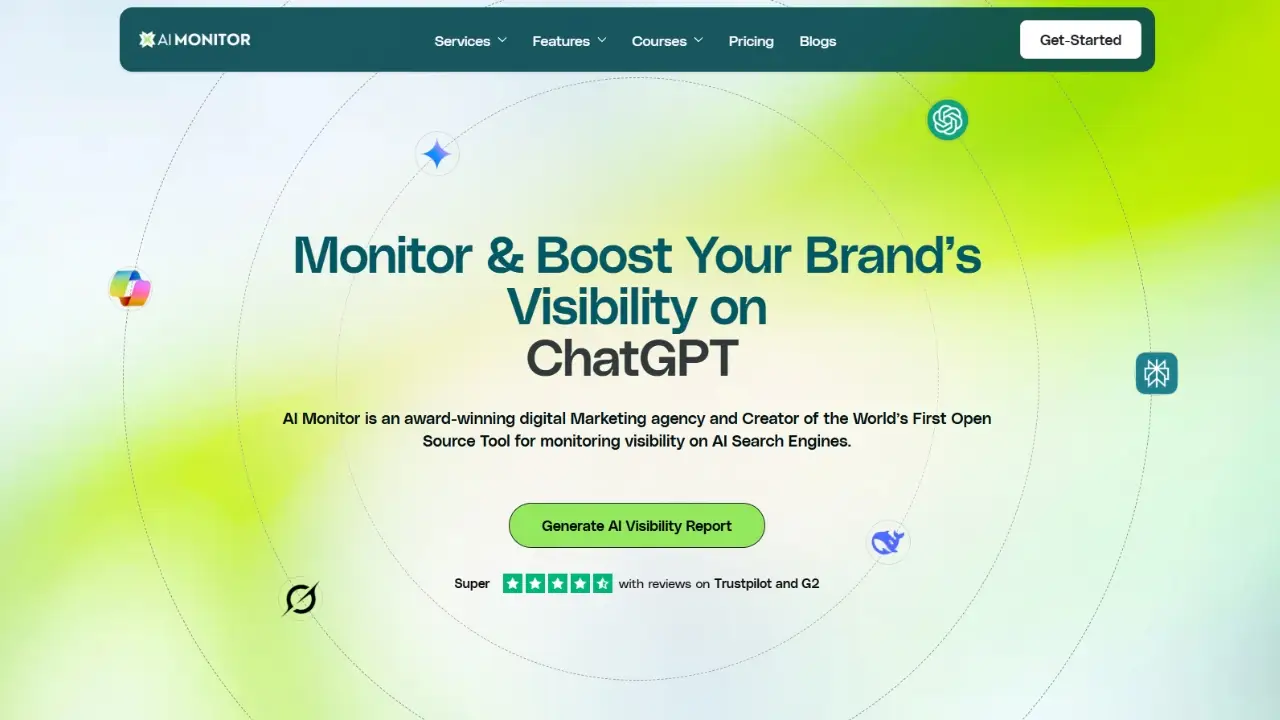
Overview:
AI Monitor is a GEO-first tool designed for brands and agencies that need a competitive edge in AI search. It excels in real-time brand sentiment analysis and competitive intelligence across all major generative engines.
Best For:
Multi-platform AI tracking, real-time alerts, and sentiment analysis for comprehensive brand management.
Key Features:
- Multi-Platform AI Tracking → Monitor brand mentions across ChatGPT, Gemini, Perplexity, Claude, Copilot, and others in real-time.
- Sentiment & Narrative Analysis → See if AI engines describe you as “best-in-class” or “outdated.”
- AI Prompt Volume Tracking → Understand what users are asking in your niche and optimize accordingly.
- Competitor Benchmarking → Compare your visibility vs. competitors’ mentions in AI answers.
- AI Traffic Analytics → Identify which blogs, pages, or assets are driving citations in AI summaries.
Pros:
- ✅ 500% Traffic Surge: Cleanomatics transformed from invisible to unavoidable in Delhi’s laundry wars.
- ✅ 45% Visibility Boost for Agencies: A GEO firm successfully turned AI into their unpaid hype machine.
- ✅ User-Friendly Dashboards: Designed for ease of use no PhD in data interpretation required.
Pros:
- ❌ Limited customization compared to enterprise-only solutions.
Pricing:
Free Forever to Custom pricing tailored to deliver maximum ROI, serving clients from Fortune 500 companies to small businesses.
Case Study:
A leading AI-powered CSR platform, Relific.io, faced a significant "AI Discovery Gap," with leads stalling as B2B buyers turned to AI search tools like ChatGPT and Gemini. Despite their expertise, Relific's name was absent from AI-generated answers, while competitors were being cited. Using AI Monitor, they implemented an AI Search Optimization (AIO) strategy to make their content "machine-readable," restructuring it to provide clear, direct answers to common buyer questions. Within 90 days, Relific saw a 366% increase in mentions as a recommended CSR tool in AI-generated answers, boosting their AI Visibility Score by 47% and leading to a 33% increase in marketing-qualified leads.
Verdict:
AI Monitor is the gold standard for anyone serious about GEO. Its real-time, multi-platform tracking and customized pricing make it a smart investment for brands of any size [Learn More or Book a Demo ]
Writesonic — All-in-One Generative AI Suite
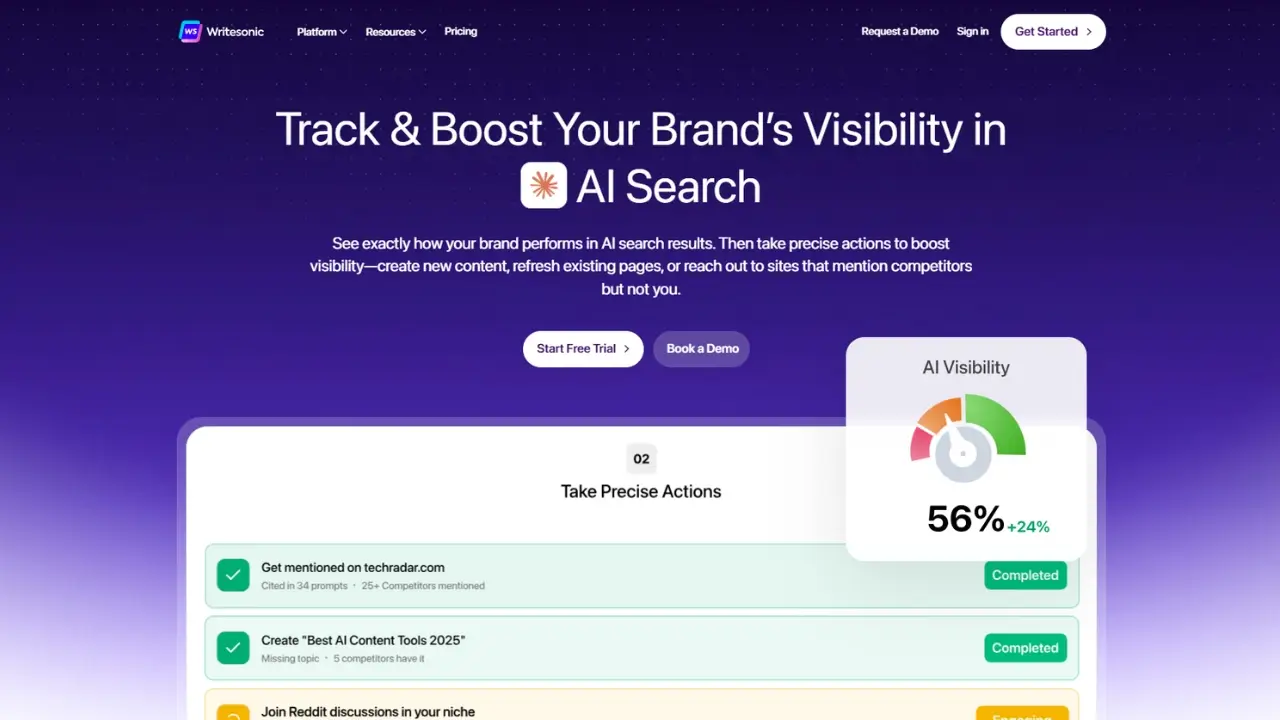
Overview:
With Writesonic, brands gain full control over their presence in AI search. The platform combines monitoring, insights, and action into one workflow, helping teams see how they show up in AI responses, uncover missed opportunities, and act instantly. Writesonic’s unique edge: it explains why your brand may be absent from AI-generated answers and tells you how to fix it. Plus, its built-in SEO and content tools mean you won’t need additional services.
Best For:
Perfect for teams focused on AI search, Writesonic centralizes monitoring, insights, and optimization. It tracks brand presence across AI platforms, identifies visibility gaps, and allows teams to act quickly with built-in SEO and content features.
Key Features:
- Monitoring Across Platforms → Track brand mentions, sentiment, and visibility everywhere AI answers appear.
- Real Prompt Data → Analyze authentic queries from over 120M AI interactions, not just keyword lists.
- Actionable Recommendations → Fix gaps in AI visibility with step-by-step guidance inside the Action Center.
- SEO & Content Toolkit → From keyword clustering to AI writing, all tools are integrated into one platform.
- Comprehensive Analytics → Forecast AI-driven search volume, measure traffic from AI, and monitor bot activity.
Pros:
- ✅Broad AI Platform Coverage: Track your brand across 8+ leading AI systems, ChatGPT, Google AI Overviews, Perplexity, Grok, and more for a complete view of visibility.
- ✅Unified GEO + SEO Workflow: Manage both AI search optimization and traditional SEO in one seamless process.
- ✅True User Intent Insights: Leverage real prompt data to align content with how people actually ask AI, not outdated keyword models.
Cons:
- ❌ Initial Learning Curve: Because Writesonic offers a wide range of features in one place, it may take new users some time to explore and master them all.
Pricing:
Starts at $39/month for its Lite plan to Custom Pricing for its Enterprise plan
Verdict:
Writesonic is an ideal solution for teams that want a single platform to handle both content creation and its optimization for the AI-driven future.
Semrush – The SEO Veteran Adapting to AI
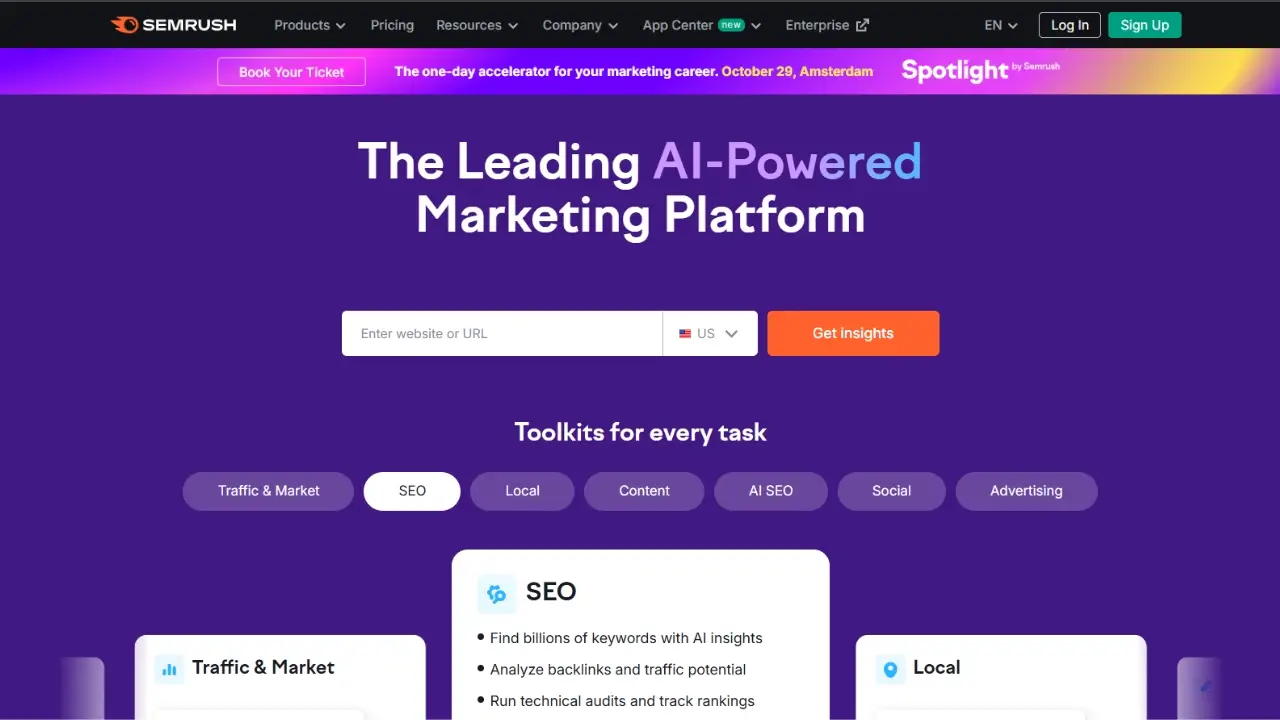
Overview:
Semrush is a powerful SEO tool that is integrating GEO features into its existing suite. It offers valuable insights, but its capabilities are not as granular as those of GEO-first tools.
Best For:
SEO teams who want to add an AI dimension to their existing workflows without changing platforms.
Key Features:
- AI Visibility Dashboard → See exactly how your brand shows up in AI-generated answers and spot the opportunities where you’re not being mentioned.
- Brand Insights & Reporting → Understand how AI systems perceive your brand with sentiment analysis, attribute tracking, and topic associations.
- Prompt Monitoring → Keep tabs on up to 10 tracked prompts per AI model (more with advanced plans) and get daily visibility updates.
- AI Site Audit → Identify crawlability issues such as missing schema, weak linking, or incomplete markup that limit your site’s reach in AI search.
Pros:
- ✅ Budget-Friendly: Priced at $99 per domain for basic tracking.
- ✅ Automatic Prompt Detection: No need to manually identify what users are asking AI.
- ✅ SEO Synergy: Effectively connects AI mentions with organic search strategies.
Cons:
- ❌ AI insights are not as granular as GEO-first tools, and they lack the depth of real-time, multi-platform data.
Pricing:
Starts at $99/month for its Lite plan.
Verdict:
Semrush is a useful stepping stone for marketers beginning their GEO journey. It's a solid, familiar choice, but those needing advanced, real-time insights will likely need a more specialized tool.
Otterly.AI – The Budget-Friendly Trainee
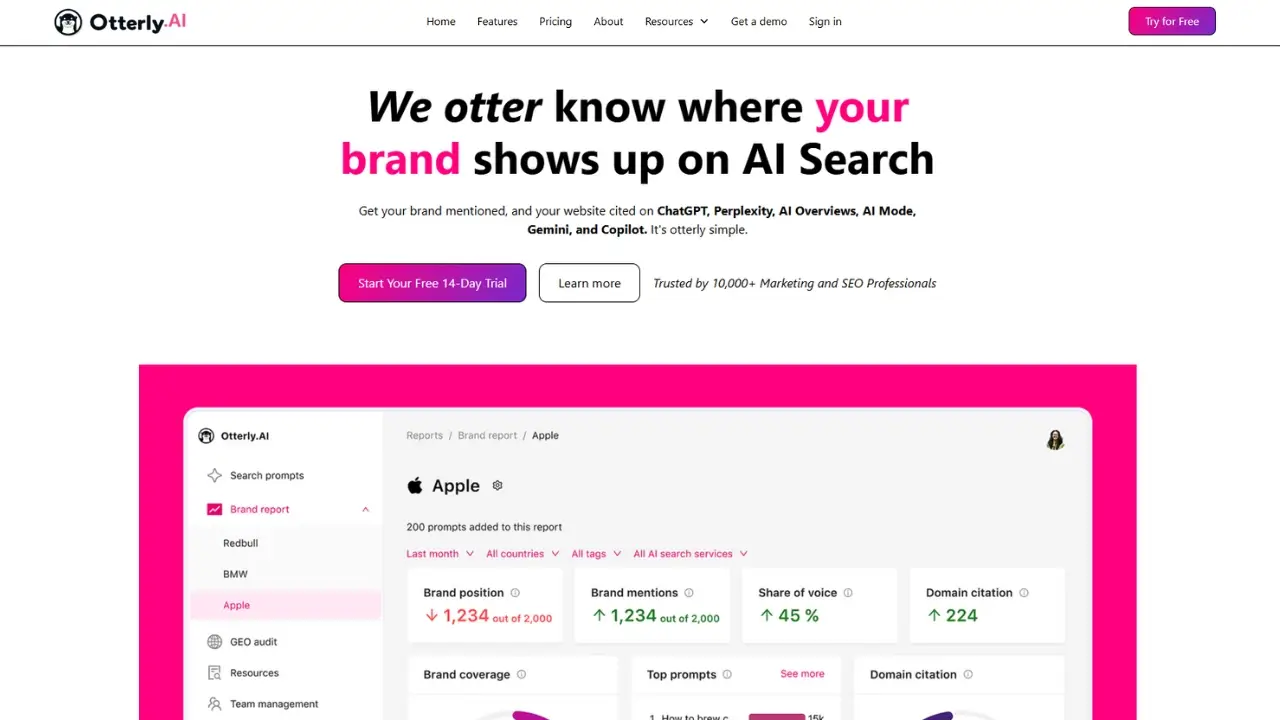
Overview:
Otterly.AI is an affordable tool for users who want basic insights into their AI search presence without a significant investment.
Best For:
Ideal for individuals or teams transitioning from SEO to Generative Engine Optimization, as it simplifies the process significantly.
Key Features:
- Brand Mentions, Ranking & Sentiment Analysis → Monitor how often your brand appears in AI-generated responses, where it ranks relative to competitors, and how it’s being portrayed (positive/neutral/negative).
- GEO Audit / Technical & Strategic Audit for AI Visibility → Evaluate on-page and structural issues (25+ factors) that may impair how your site gets cited by AI systems, plus SWOT-style insight into gaps.
- Detailed Reports & Exporting → Export prompt-, brand-, and citation-level data (e.g., CSV format) and generate shareable reports and dashboards.
Pros:
- ✅ User-Friendly: Easily monitor specific prompts, allowing the tool to handle the rest.
- ✅ Query Snapshots: Provides beginner-friendly snapshots for quick reviews of AI search engine queries.
- ✅ Keyword Conversion: Offers the option to convert your keywords into AI prompts.
Cons:
- ❌ Manual testing has shown occasional data inaccuracies, which may affect strategic decisions.
Pricing:
Starts at $29/month.
Verdict:
While Otterly.AI is a cost-effective option for basic monitoring, its reliability issues and limited features may leave serious marketers wanting more.
SERanking – A Solid SEO Tool with an Eye on AI
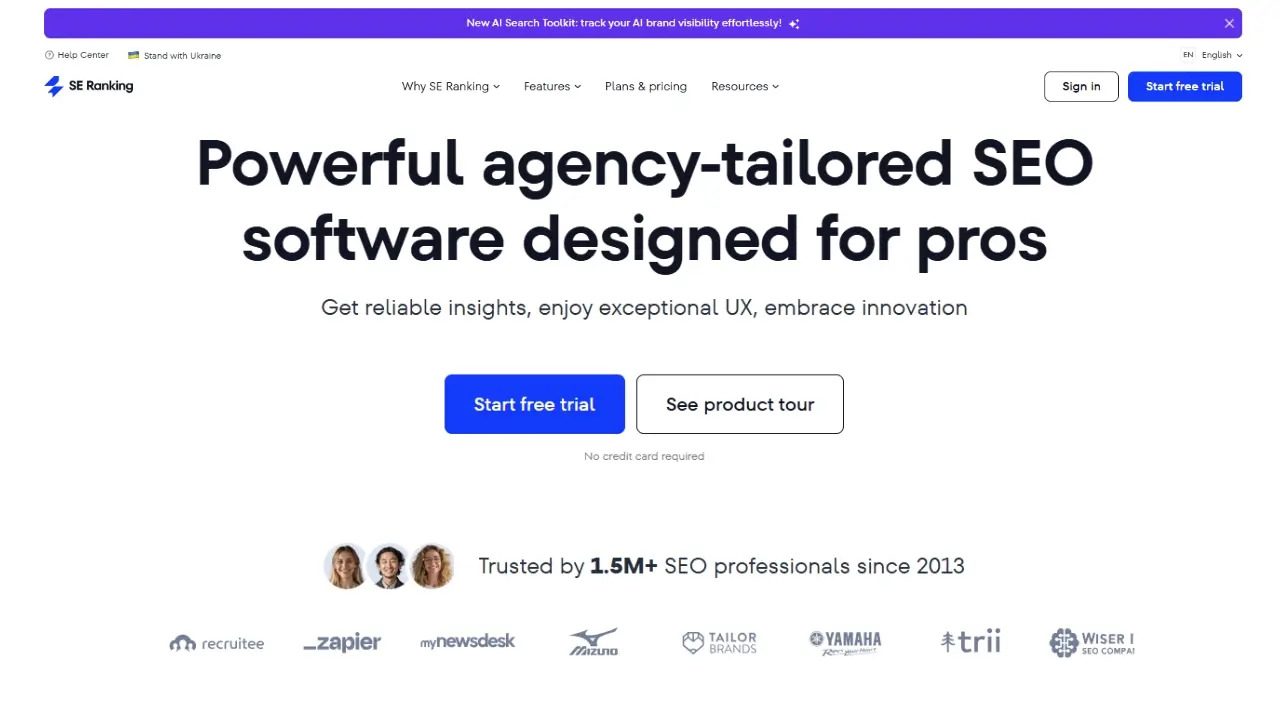
Overview:
SERanking is a traditional SEO platform that has made a concerted effort to adapt to the GEO landscape. While a robust SEO tool, its GEO capabilities are currently limited in scope, focusing primarily on Google's AI Overviews.
Best For:
SEO professionals who prioritize Google's AI-powered snippets and need a cost-effective way to get started.
Key Features:
- Rank Tracking That Feels Real-Time → Know exactly where your keywords stand across Google and other search engines.
- A Site Audit That Catches the “Invisible” Issues → From broken links to sluggish load times, SE Ranking’s audit digs into the technical stuff that usually hides in the background.
- On-Page SEO Checks You Can Act On → Type in a target keyword, and the tool shows you how well your page is optimized for it. Metadata, headings, readability, you’ll know exactly where to improve, without needing an SEO PhD.
Pros:
- ✅ Solid for Traditional SEO: A reliable choice for those focused on classic SEO strategies.
- ✅ Real-Time Alerts: Provides timely notifications for Google’s AI mentions.
- ✅ Hyper-Focused on AI Overview Responses: Effectively tracks Google snippets with precision.
Cons:
- ❌ Its narrow scope ignores critical platforms like ChatGPT, Claude, and Bing AI, leaving major gaps in a comprehensive GEO strategy.
Pricing:
Varies by plan, starts at $ 52/month with GEO features often an add-on or a part of higher tiers.
Verdict:
SERanking is a solid SEO tool, but its limited scope makes it unsuitable for a comprehensive GEO strategy that spans all major generative engines.
Profound – The Enterprise Oracle
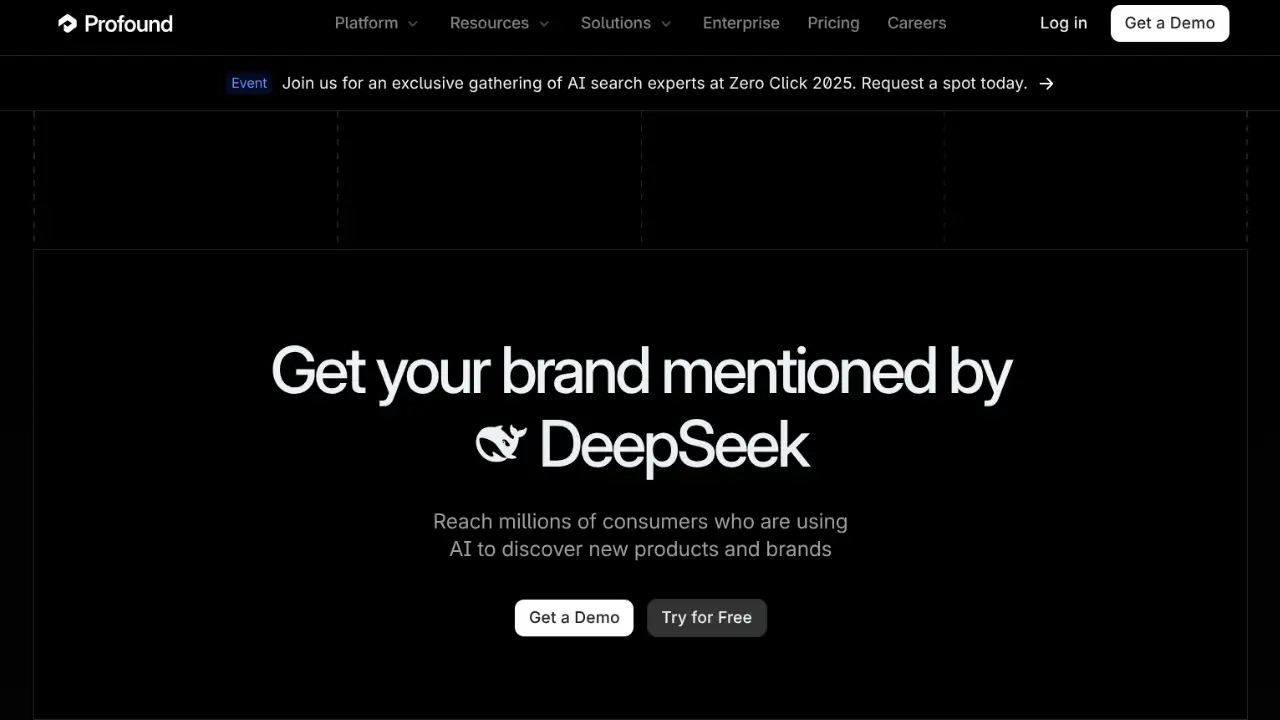
Overview:
A premium analytics suite for Fortune 500 brands, Profound combines AI conversation tracking with predictive modeling to dominate global brand visibility.
Best For:
Global enterprises with seven-figure budgets and in-house data science teams.
Key Features:
- AI Visibility Tracking → See how often and where your brand appears in AI-generated answers across ChatGPT, Google AI, Perplexity, and more.
- Prompt & Query Monitoring → Discover what questions your audience is asking AI and optimize your content to get featured.
- AI Crawlability Checks → Ensure AI bots can properly access and interpret your website with technical audits.
Pros:
- ✅ Nerdy Oracle: Predicts AI-driven brand risks before they trend (e.g., PR crises brewing in ChatGPT responses).
- ✅ Competitor Dissection: Reverse-engineers rivals’ AI positioning strategies.
- ✅ Enterprise-Grade Granularity: Track regional sentiment nuances (e.g., “eco-friendly” in Berlin vs. “budget-friendly” in Mumbai).
Cons:
- ❌ The custom, enterprise-only pricing is out of reach for most businesses, starting at over $2,000/month.
Pricing:
Starts at $499/month, lite plan, Best for small companies and individuals.
Verdict:
Profound is the ultimate tool for companies that need unparalleled, granular data and can afford to invest heavily in their AI strategy. It's unmatched in power but inaccessible to the vast majority of brands.
Rankscale – The GDPR-Compliant Analyst
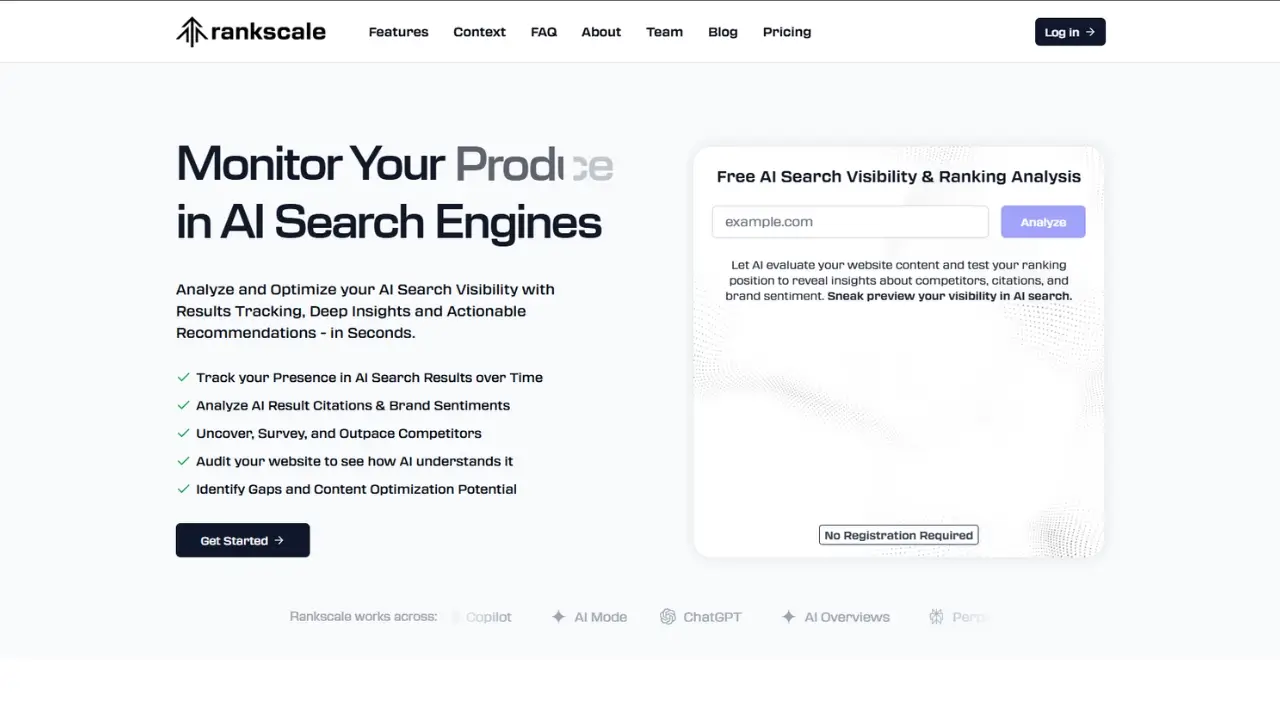
Overview:
A Vienna-based GEO tool laser-focused on European compliance, offering AI search optimization within strict GDPR and EU AI Act frameworks.
Best For:
EU-based small and medium-sized businesses that must prioritize regulatory alignment.
Key Features:
- Sentiment & Context Analysis → Assess how your brand is portrayed in AI-generated responses, helping to manage brand perception.
- Prompt & Query MonitoringSchema & Content Optimization → Receive recommendations to enhance your content's AI-friendliness, improving your chances of being featured.
- Multilingual & Multiregional Support → Track and optimize your AI visibility across different languages and regions.
Pros:
- ✅ EU Regulatory Alignment: Built for GDPR/EEA compliance from day one.
- ✅ Granular Citation Analysis: Reveals which domains AI trusts (e.g., *.eu sites favored in EU queries).
- ✅ SEMrush Integration: Bridges traditional SEO with AI search data.
Cons:
- ❌ Struggles with non-EU sentiment trends and .com domains, making it less useful for global campaigns.
Pricing:
Starts at around $20/month.
Verdict:
A valuable niche player for European compliance teams, but too narrow in focus for global campaigns.
BrandRank.ai – The Trust Architect
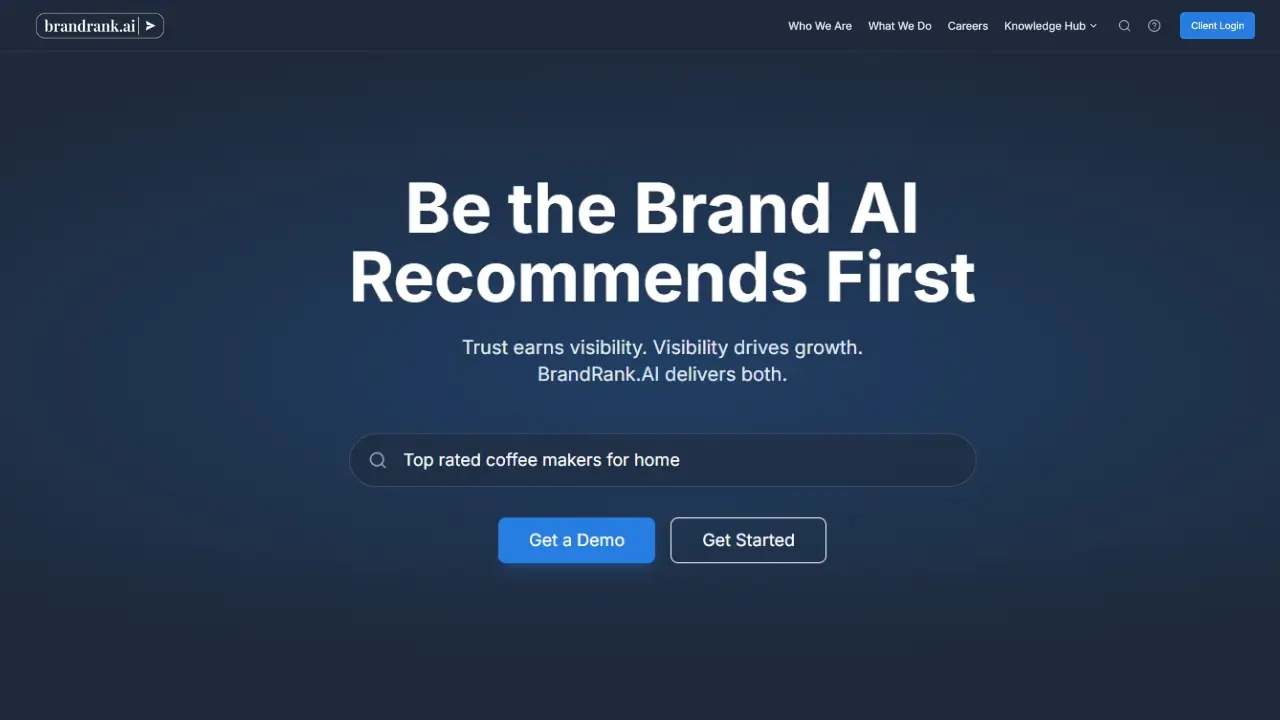
Overview:
BrandRank.ai combines AI monitoring with human ethical oversight to protect brand reputation in AI-generated answers.
Best For:
High-stakes reputation management for enterprises in sensitive industries like healthcare and finance.
Key Features:
- Brand Vulnerability Detection → Highlights areas where your brand may be misrepresented or absent in AI-generated responses.
- Content Readiness Assessment → Evaluates how well your content aligns with AI algorithms, ensuring optimal presentation.
- Real-Time Alerts & Reporting → Provides timely notifications and detailed reports to keep you informed of any significant changes.
Pros:
- ✅ Ethical AI Focus: Human experts validate 30% of critical alerts.
- ✅ Crisis Prediction: Spotted 92% of PR risks in beta tests pre-ChatGPT leaks.
- ✅ Athlete/Entertainment Niche: Emerging use case for pro sports reputation management.
Cons:
- ❌ Enterprise-Only Pricing, Data Latency.
Pricing:
Custom enterprise pricing only.
Verdict:
The gold standard for reputation-conscious enterprises that can afford its premium price.
Nightwatch – A Traditional SEO Tool Evolving for AI
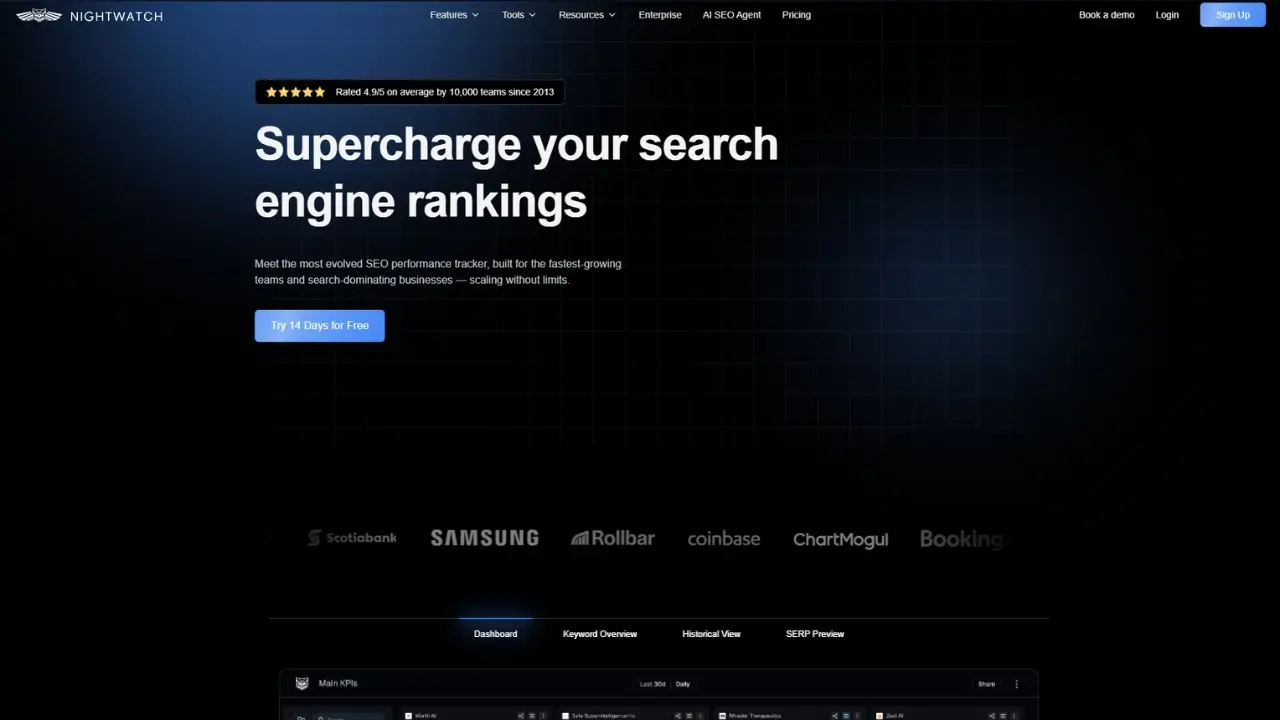
Overview:
A well-established SEO platform that has recently added features to track LLM mentions. While it provides some insights, its focus remains on traditional SEO metrics, making it ill-equipped for the multi-platform demands of GEO.
Best For:
Marketers who are heavily invested in rank tracking but want to dip their toes into AI monitoring without a new tool.
Key Features:
- Predictive SEO Insights → Leverage AI to forecast emerging keyword trends and content opportunities, allowing you to proactively adjust your SEO strategy.
- Local & Global Tracking → Gain insights into keyword performance at city, zip code, and district levels across over 190,000 locations worldwide, enabling precise local SEO strategies.
- Real-Time Search Intelligence → Stay ahead with up-to-date tracking on Google, Bing, YouTube, DuckDuckGo, and Yahoo, ensuring you capture the latest search trends and shifts.
Pros:
- ✅ Clean Interface: Distracts you from its lack of AI features.
- ✅ Google Search Console Integration: For those allergic to innovation.
- ✅ Pricing Nostalgia: $39/month to relive the glory days of exact-match domains.
Cons:
- ❌ The LLM tracking feature is a recent addition and may not have the depth or coverage of GEO-first tools.
Pricing:
Starts at around $32/month when billed annually.
Verdict:
Nightwatch is a useful addition to your existing SEO toolkit, but it is not a comprehensive GEO solution. It's best used to supplement other tools rather than as a standalone GEO strategy.
Ziptie.dev – The Developer's Only Friend
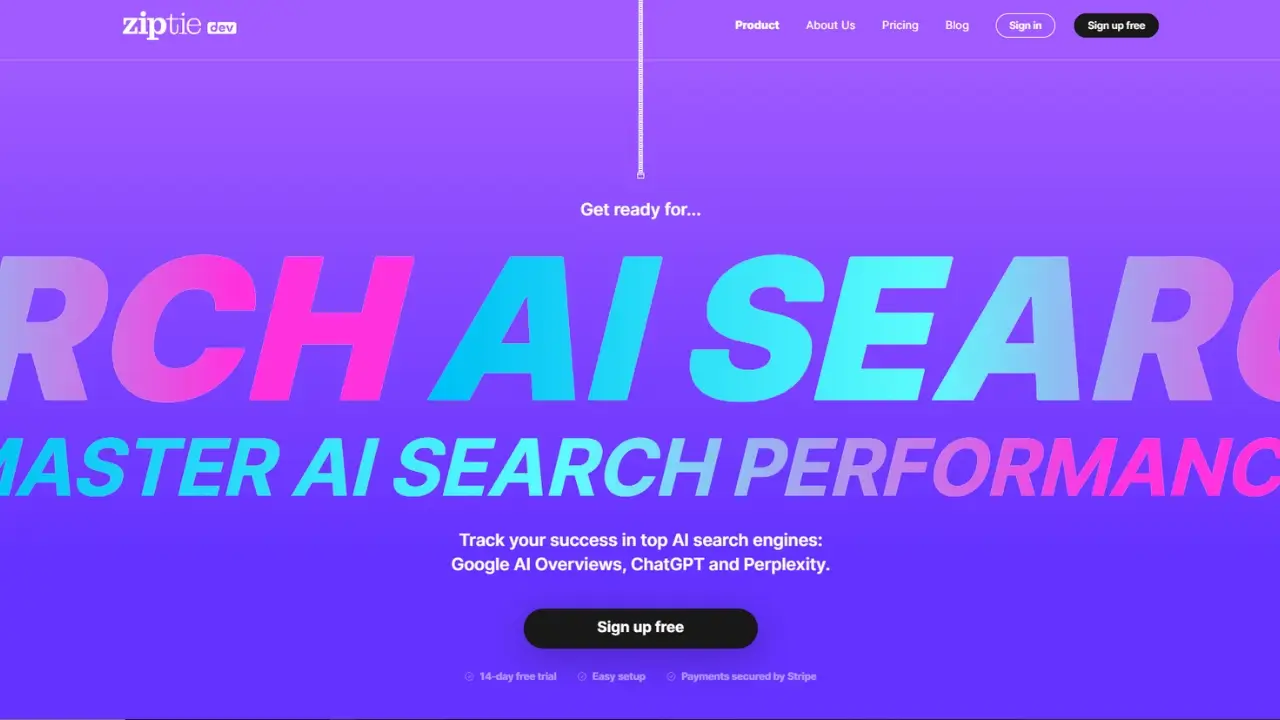
Overview:
A no-frills, API-first GEO tool built for engineers who want to code their way through AI search chaos.
Best For:
DevOps teams and companies where the CTO or engineering lead manages the digital strategy.
Key Features:
- AI Success Score → Evaluate your content's performance based on mention frequency, sentiment, and citation strength, helping you prioritize optimization efforts.
- AI Search Prioritization → Focus on the most impactful queries by identifying those with high commercial potential and relevance to your audience.
- Query Enhancement → Transform traditional SEO keywords into AI-friendly questions, improving your content's alignment with AI search behaviors.
Pros:
- ✅ Unlimited Scalability: If you can code it, it’ll work (theoretically).
- ✅ Granular Control: Perfect for building bespoke GEO-CRM-ERP-Frankenstein stacks.
- ✅ No Hand-Holding: Finally, a tool that respects your ability to Google error codes.
Cons:
- ❌ This tool is exclusively for developers, as it requires extensive coding knowledge and a technical interface that is not marketer-friendly.
Pricing:
Starts at $179/month.
Verdict:
Ziptie.dev is a powerful tool for coders who need to build a custom GEO solution from the ground up, but it is completely impractical for marketers.
What is Generative Engine Optimization (GEO)?
AI Monitor
Multi-platform tracking & real-time alerts.
Real-time sentiment analysis, competitive intelligence across all major generative engines (Google AI Overviews, ChatGPT, Gemini, etc.).
✅ Actionable, user-friendly dashboards
✅ Proven ROI results
Writesonic
All-in-one GEO + SEO workflow.
AI-ready content creation, true user intent analysis, and multi-platform monitoring.
✅ Broad AI platform coverage
✅ Insights from real user queries
Semrush
SEO teams are adding an AI dimension.
AI Overview tracking, content optimization suggestions, and prompt detection.
✅ Strong SEO synergy
✅ Trusted brand and user interface
Otterly.AI
Individuals or teams new to GEO on a budget.
Basic query snapshots, keyword-to-prompt conversion.
✅ User-friendly and simple interface
❌ Limited tracking capabilities
SERanking
SEO pros prioritizing Google AI Overviews.
Real-time AI Overview alerts, AI-specific reporting.
✅ Reliable for traditional SEO
Profound
Global enterprises with large budgets.
Predictive analytics, deep sentiment analysis across regions.
✅ Granular, enterprise-grade data
❌ Overwhelming complexity
Rankscale
EU-based brands needing GDPR compliance
GDPR-compliant AI search optimization, citation analysis.
✅ Granular citation analysis
❌ Slower data updates
BrandRank.ai
Reputation-conscious Fortune 500s.
Ethical AI oversight, human-vetted alerts, crisis prediction.
✅ Proactive crisis prediction
❌ Data latency compared to real-time tools
Nightwatch
Marketers focused on traditional rank tracking.
Basic LLM mention tracking, Google Search Console integration.
✅ Affordable option for existing users
❌ Not a true GEO solution
Ziptie.dev
Developers need API-first solutions.
API-first architecture, unlimited scalability, granular control.
✅ High scalability for bespoke solutions
❌ No user-friendly interface for marketers
How to Get Started with GEO: A Simple 3-Step Guide
Choosing a tool is only the first step. To truly succeed, you need a strategy. Here’s how to start:
- Conduct an AI Content Audit: Use your chosen GEO tool to scan your most important content. Look for clear, concise answers to common user questions. Are your headings in a clear hierarchy? Is your data structured in a way an AI can easily parse, like with bullet points or schema markup?
- Optimize for AI Citation: Refine your content by making it more authoritative. Link to credible sources, include data and statistics, and use conversational language that mimics how a person might ask a question. The goal is to be the most trustworthy and digestible source on the topic.
- Monitor, Test, and Refine: GEO is not a one-time fix. Use your tool’s real-time alerts to monitor brand mentions and sentiment. If a competitor is gaining citations, analyze their content to see what they’re doing right. Use these insights to continually refine your content for maximum visibility.
How to Measure the ROI of Your Generative Engine Optimization (GEO) Tool
Measuring the ROI of Generative Engine Optimization requires a new mindset. Unlike traditional SEO, which often measures success by clicks and organic traffic, GEO focuses on establishing brand authority and influence within AI-generated answers. The ROI is found in a combination of tangible and intangible benefits that lead to long-term business value.
The ultimate ROI formula for any marketing initiative is:
ROI=Cost of Investment(Gain From Investment−Cost of Investment)×100%

For GEO, the "Gain From Investment" isn't just about clicks. It's about a new set of metrics that reflect your brand's authority and reach in the AI-first world.
Key GEO Metrics to Track for ROI
To properly calculate the return on your GEO investment, you must track a combination of leading and lagging indicators.
Answer Share of Voice (ASoV)
Answer Share of Voice (ASoV) measures the percentage of AI-generated answers that include your brand for a given set of topics or queries.This is a leading indicator of your brand's authority and visibility in the AI search landscape. A higher ASoV means your brand is being cited more often than competitors. This concept is a direct evolution of the traditional Share of Voice (SoV) metric, adapting it for the generative AI ecosystem.
- How to track: Use a dedicated GEO tool to create a "prompt matrix" based on your key products, services, and target audience questions. Track the number of times your brand is cited in the AI-generated responses for these prompts.
- Example: If you track 100 key prompts related to "marketing automation software" and your brand, "MarketFlow," is cited in 25 of the responses, your ASoV for that topic is 25%.
Citation Rate & Sentiment Analysis
Citation rate measures the frequency with which an AI model references your brand or content as a source for its answers. This is a direct indicator of trust. Sentiment analysisthen evaluates whether that mention is positive, negative, or neutral. A positive sentiment score indicates the AI is reinforcing your brand's reputation, a crucial factor in building long-term authority.
- How to track: Monitor all mentions of your brand in AI responses. A GEO tool is essential for this as it can automatically analyze the tone and context of the mention.
- Example: A GEO tool identifies that your company, "HealthLabs," was cited 15 times in AI answers this month, with 90% of the mentions being described with positive terms like "authoritative," "trusted," and "innovative."
AI-Driven Referrals and Conversions
While AI-generated answers often reduce clicks, they can still drive high-quality, high-intent traffic.AI-driven referrals are direct clicks from an AI Overview or a chatbot's source link that lead a user to your website.Because the user has already received a summarized answer, they are often more qualified and ready to convert. Tracking this traffic helps you assign a tangible value to your GEO efforts.
- How to track: Implement specific tracking parameters (UTM codes) on the URLs that are cited by AI Overviews and measure the conversions that result from that traffic. You can also use platforms like Google Analytics 4 (GA4) to create a custom channel group for AI traffic and segment it to analyze its behavior and conversion rates
- Example: Your GEO strategy resulted in 500 new visitors from AI Overviews. These visitors had a 2x higher conversion rate than your average organic traffic, directly impacting your lead generation goals.
Operational Efficiency & Content Velocity
GEO can also deliver a significant return by improving your internal marketing workflows. Operational efficiency ROI measures the time and cost savings from automating content creation and optimization. For example, using a tool like Writesonic to quickly generate AI-optimized content can reduce content production hours and costs.
- How to track: Measure the average time and resources required to produce a piece of high-quality content before and after implementing your GEO strategy.
- Example: A content team that previously took 40 hours to research and write a detailed guide on a complex topic can now complete it in 15 hours by leveraging GEO tools, saving time and allowing them to produce more content.
Putting It All Together: A Holistic GEO ROI Framework
The ROI of GEO is not just one number. It's a holistic view of your brand's influence in the new AI ecosystem. By focusing on metrics like Answer Share of Voice, Citation Rate, and AI-Driven Conversions, you can build a compelling case for your GEO investment. Over time, these leading indicators of authority and trust will translate into tangible business results, including increased branded searches, higher-quality leads, and a stronger competitive advantage.
The Final Word: The Future of Search Isn't Coming - It's Here

The world of search is changing, and honestly, it's not a change we can afford to ignore. That feeling of uncertainty you might have about AI is valid, but it's also a chance to get ahead. Think of Generative Engine Optimization as your brand's new superpower. It's the difference between being a forgotten link and being the very answer a customer trusts. The tools we've explored in this guide are your first step. It's time to stop worrying about a zero-click future and start building a new strategy. Start today, find the right tool for your team, and become the kind of authority that AI and your customers will turn to again and again.
